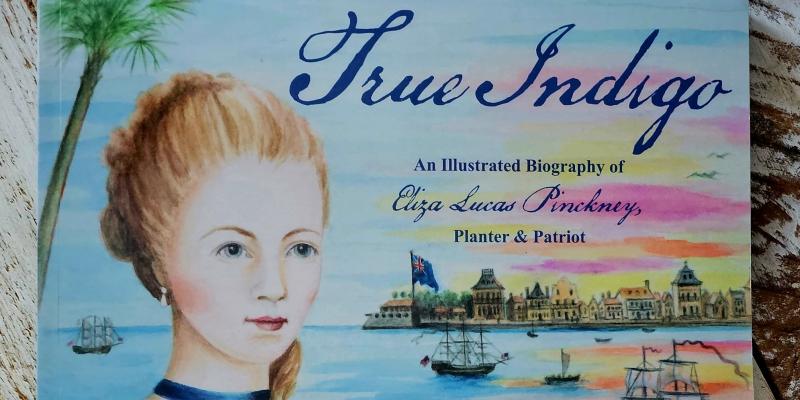
By Renae Brabham / Images by Renae Brabham
Through this book, I learned more about Charleston’s history and flora than I ever have from any other single volume.
I cannot fathom a need arising for another biography of Eliza Lucas Pinckney ever again. Dianne Coleman, artist and author extraordinaire, has raised the bar to dizzying heights with her newly released book, "True Indigo: An Illustrated Biography of Eliza Lucas Pinckney, Planter and Patriot."
Eliza Pinckney was a determined trailblazer in young America. She endured battles, diseases, and maladies that made my knees tremble as I read them. She tried, failed, tried again, and finally succeeded in producing a royal-grade indigo. But her story doesn’t end there—she persevered through many challenges and was personally responsible for documenting and introducing a variety of plant and animal species to South Carolina’s coastal communities.
The idea for "True Indigo" began taking root in Coleman’s mind about 25 years ago, during a family gathering in Asheville, North Carolina. A relative mentioned that they were distantly related to Eliza Lucas Pinckney. This revelation sparked an enduring curiosity that drove Coleman to spend the next quarter-century researching the life of one of South Carolina’s first feminists. Coleman poured over Eliza's surviving journals and letters, absorbing every bit of information to create this beautiful work.
The book itself is a coffee-table-worthy masterpiece. It arrived with an indigo blue ribbon as a bookmark, identical to the choker ribbon Eliza wears on the book cover. Every single page—down to the chapter notes and bibliography—is beautifully illustrated by Coleman, with period renderings and artist illustrations intertwined. The maps are exquisitely detailed, and I found myself scanning the pages with a magnifying glass to better appreciate the details.
The book itself is a coffee-table-worthy masterpiece.
Ms. Coleman, an artist and botanist herself, felt a kinship with the "blue-handed" Eliza Pinckney. This connection is evident in every detail of the book. Coleman’s artwork perfectly complements Eliza’s story, drawing readers deeper into the narrative.
Though Coleman resides in Winston-Salem, North Carolina, her research took her to the Lowcountry, where she walked in Eliza’s footsteps. One of the most profound moments in her journey occurred on the Hampton grounds outside of McClellanville, South Carolina. It was there that Coleman felt most connected to her subject.
Eliza's story is intricately woven into the history of Charleston and its surrounding communities. Through wars, slavery, separation from England, hurricanes, fires, and diseases, the struggles she and her family faced mirror that of early America.
Through this book, I learned more about Charleston’s history and flora than I ever have from any other single volume. The book’s index and bibliography are extensive, leading me down several enlightening rabbit holes.
The maps are exquisitely detailed, and I found myself scanning the pages with a magnifying glass to better appreciate the details.
"True Indigo" is a book that will resonate with readers of all ages, from pre-teens to seniors. I believe it would be a wonderful resource for teaching colonial history in schools and learning institutions.
The book will soon be available on Amazon. I look forward to seeing Coleman at a few local book signings and will update this review with those dates. In the meantime, you can purchase the book and contact Coleman through Facebookhere.